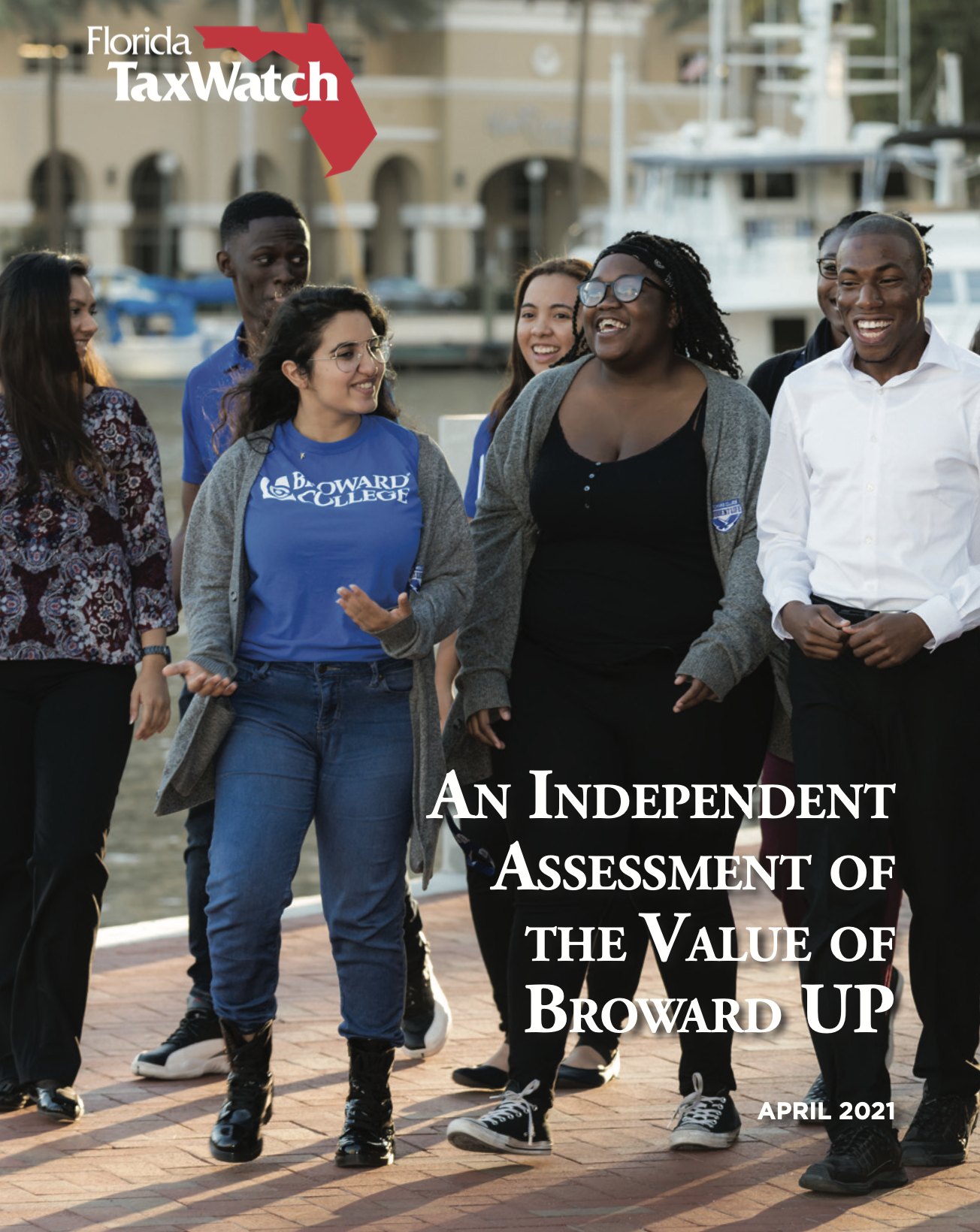An Independent Assessment of the Value of Broward up

Broward UP (“Unlimited Potential”) is an innovative, community-centric approach to delivering necessary workforce education in communities most impacted by high unemployment and low education attainment. Pioneered by Broward College, Broward UP seeks to increase college access, improve degree and certificate attainment, and raise economic mobility in six Broward County ZIP codes with disproportionately higher rates of unemployment and lower educational attainment relative to surrounding areas. By providing free, in-demand courses, Broward UP holistically reduces the perpetuation of poverty in communities.
Economic and fiscal benefits also accrue to the broader community and state as a more educated workforce contributes to closing the skills gap, bolstering local employment, boosting tax revenue, and reducing expenditures on public assistance programs. Subsequent employment is expected to generate more than $71 million in personal income, which will go to indirectly support other jobs in the area. The analysis also finds that based on the current number of Broward UP students, the fiscal benefit to tax revenue would be around $556,000 annually as individuals spend more on taxable goods and services.
- Across all Broward UP students, there is about $475 million in increased work-life income expectancy—an amount that figures to about $204,000 more in additional lifetime income per student.
- Across the six Broward UP ZIP codes, participants contribute an average of $39 million in additional lifetime earnings to these local areas.
- The analysis also finds that based on the current number of Broward UP students, the fiscal benefit to tax revenue would be around $556,000 annually as individuals spend more on taxable goods and services.
- For every $1 of incurred cost—due to start-up and operations cost—the state of Florida can expect to receive $13.13 in benefit.
- Total net benefits range anywhere from $13 million to $53 million in the six Broward UP areas. For these ZIP codes, the additional income would encourage more local spending, further supporting businesses in the area.
- Based on the data, of the 2,325 Broward UP participants, an estimated 1,928 are projected to find employment within one year from completing courses and attaining the respective award type. This number roughly corresponds to about an 83 percent employment rate for Broward UP graduates and creates around $71,870,364 in personal income.
Florida TaxWatch recommends policymakers incorporate the Broward UP framework as a model for the rest of the state. Specifically, policymakers can leverage partnerships in other communities between higher education institutions and local organizations to cultivate comprehensive workforce development programs aimed at curbing high unemployment and low education attainment. These programs should specifically target underserved populations with historically low exposure to postsecondary education. FCS institutions provide an ideal space to focus these efforts since many already have considerable experience providing career and technical education to students at a fraction of the cost. Furthermore, FCS institutions already maintain many important connections in the local communities, which can further develop talent pipelines. The focus should be on promoting local job growth and economic development so that the end result is a generative, economically prosperous community where residents choose to stay and work.